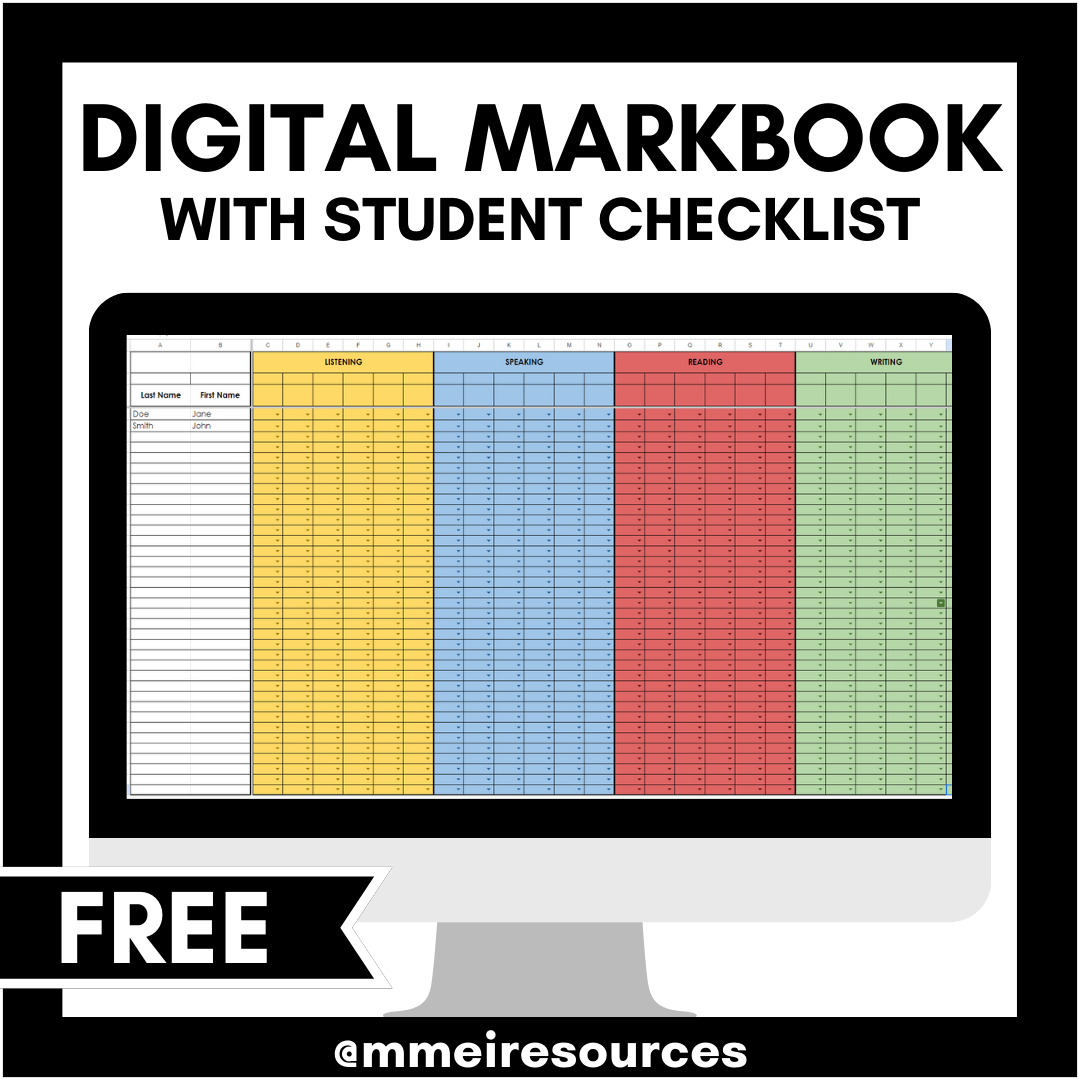
As a rotary Core French teacher, I see a lot of students every day. At any given time during the year, I typically have between 120-150 students who I am teaching. Keeping track of all of these students, all of their work, their progress, and their grades, can be quite challenging.
Being intentional about the strategies I use is crucial.
This is where systems come into play.
In my Core French classroom, I use a series of systems to help me maintain my gradebook in an effectively functioning manner.
One important decision in this process is whether to opt for a paper or digital gradebook. The choice between these two methods can significantly impact the efficiency of your gradebook management. Let’s explore the considerations and advantages of each to help you decide which aligns best with your teaching style and preferences.
Paper Gradebook or Digital Gradebook?
Are you a paper planner or a digital planner?
Does your preference in planning match your preference for your gradebook?
This is probably the first thing you will need to consider before you start grading.
Here are some reasons why you may want to use either of these methods:
Paper Gradebook:
- Tactile and Physical: Allows for a hands-on approach to grading and organisation.
- No Dependency on Technology: Does not rely on digital devices, making it available at all times.
- Customization: Easy to personalise with handwritten notes, annotations, and visual cues.
- Less Susceptible to Technical Issues: Not affected by potential technological glitches or internet downtime.
Digital Gradebook:
- Accessibility: Can be accessed from anywhere with an internet connection, enhancing flexibility.
- Automated Calculations: Facilitates automatic calculations and grading, saving time and reducing errors.
- Integration with Tools: Can integrate with various educational software and apps for seamless workflows.
- Collaboration: Allows for easy sharing and collaboration among teachers or students on assignments or grades.
I have tried to use both digital and paper gradebooks. I know for certain that I prefer paper. As much as I love technology, I am unable to leave all my grades in a digital format, in fear of losing them somehow. I also find it much easier to input marks when it comes time for Report Cards, when they are on a piece of paper in front of me.
If you prefer a digital version, check out my freebie library for a free digital markbook template.
Click the image below to sign up for my VIP list and gain access to this template.
My Gradebook System
Here is what my paper gradebook system looks like:
- I have one folder for each class that I teach. Alternatively, you could use a binder with dividers. I prefer folders as they take up less space and are easier to carry if I’m teaching French à la carte.
- Within each folder, I have 5 copies of the class list.
- The first list in each folder is reserved for general use. I use this list to check off various things such as attendance, homework completion, assignments submitted, quizzes or tests taken, permission slips or forms collected, participation in class activities, completion of other tasks, etc.
- The next four copies are each labelled with the names of the different strands of the curriculum. This means, listening marks are recorded on a separate sheet of paper from speaking, reading and writing marks.
- On each of these copies, the first 5-6 columns are for grades for assessments in Term 1 followed by a final Term 1 mark for that strand. The last 5-6 columns are for grades in Term 2 followed by a final Term 2 mark. This saves paper and I don’t have to put in new class lists each term.
- I typically use class lists that are provided from the office. You could, however, create your own.
Reflect and Adjust
The last key aspect to consider is the ongoing reflection on the efficiency of your chosen systems and the willingness to make necessary adjustments. It’s essential to recognize that just because a system is effective today doesn’t guarantee its efficacy tomorrow, and that’s perfectly okay. Regularly assessing and adjusting your systems ensures they remain effective and suit your needs, allowing for ongoing improvement in your gradebook management approach.


